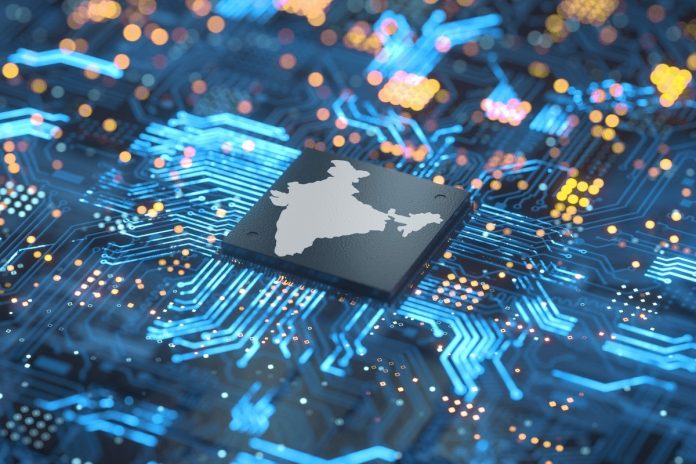In recent years, the central government’s commitment to nurture new-age manufacturing, in support of its ‘Make-in-India’ initiative, has significantly altered the landscape for both domestic manufacturers and large-scale global corporations.
The implementation of incentives such as the production-linked incentive (PLI), SPECS, and increased foreign direct investments (FDIs) has breathed new life into domestic manufacturing and exports, driving industry growth.
Dixon Technologies, the country’s largest home-grown electronics manufacturing services (EMS) player, is emerging as a frontrunner in harnessing the government’s support and expanding its contract manufacturing operations in India.
This manufacturer is among the registered entities set to benefit from the incentives offered under the PLI 2.0 scheme focusing on the IT hardware sector.
According to a recent Swarajya’s report, Dixon’s unit Padget Electronics, has secured a contract from Lenovo to produce IT hardware products under the revised production-linked scheme.
Once confirmed, this EMS provider will begin the production of notebooks and laptops for Lenovo, which was marginally ahead of Dell to become the second largest personal computer brand in the last quarter, as per IDC.
In addition, Dixon Technologies is constructing a new facility in Noida designed to accommodate the production of 1.3 million laptops for the Taiwanese major, Acer.
Dixon’s Growth Under PLI Scheme
Both the contracts are under the revamped production-linked incentive scheme for IT products.
Dixon Technologies, committed to a cumulative production value of Rs 48,000 crore over six years, has been deemed eligible under the restructured production-linked incentive scheme for IT products.
With this, the company accounts for one-seventh of the extra production value of Rs 350,000 crore committed collectively by 27 eligible companies over a period of six years, as specified by the government.
Aligned with the growth plans firmly rooted in the Indian government’s policy, Dixon is aiming to secure a prominent position among the top EMS players globally.
As reported by Business Standard, Sunil Vachani, executive chairman, envisions Dixon concluding this calendar year as the 15th or 16th largest EMS player globally, reaching to the top 10 within five years, and aiming for a top-five position in the next decade. Dixon held the 21st position in 2022.
“We have leveraged the PLI (performance-linked incentive) scheme to build scale and it is a stepping stone for Dixon to become a global champion, selling locally as well as exporting from India,” Vachani stated.
Government’s Push Through PLIs
A decade ago, India encountered significant challenges in its electronics manufacturing, semiconductor manufacturing, and other emerging areas like electric vehicles and component manufacturing.
In the past, challenges stemmed from inadequate government policies, a software-centric focus, and limited awareness of these new-age manufacturing ecosystem.
On 1 April 2020, the government introduced the Production Linked Incentive (PLI) scheme aimed at incentivising large-scale electronics production.
This initiative offers a financial incentive ranging from 4 per cent to 6 per cent on the incremental net sale of manufactured items, including mobile phones and select electronic components.
Under this program, the government authorised 16 businesses, comprising five international firms for mobile phones valued at Rs 15,000 or more, five domestic companies, and six businesses focusing on specific electronic components.
Furthermore, the government has revamped the PLI 2.0 scheme for IT products, nearly doubling the incentive to Rs 17,000 crore.
How Dixon Plans To Scale Global Ranks
Established with its first factory by co-founder Vachani in 1993, the company initially focused on manufacturing CRT televisions (TV).
Over the years, it has undergone significant expansion, diversifying its portfolio from CRT to include consumer electronics, lighting, home appliances, mobiles, and more.
Dixon’s journey began when Lucky-Goldstar, now LG Electronics, sought a subcontractor in India to manufacture a few thousand TVs for export.
The agency was selected to produce TVs for the domestic market. Following this association, Dixon secured partnerships with clients such as Phillips, manufacturing consumer durables, DVDs, audio, and VCRs.
Additionally, it collaborated with SEGA for the production of video game consoles. Today, the company stands as the largest EMS player in India, with a clientele of over 60 companies.
Today, Dixon’s vision for contract manufacturing extends well beyond from where it started. The agency is involved in five out of the 14 PLIs it qualifies for — mobile devices, IT products, refrigerators, LED components, and telecom networks.
Prior to PLI, Dixon assembled 100,000 phones monthly. However, with new facilities in the works and existing ones operational, its capacity is set to reach 70 million phones annually. This includes 40 million feature phones and 30 million smartphones, according to the BS report.
Vachani highlights that, with an annual demand of 180 million phones in the country, Dixon will command over 35 per cent of the total capacity.
The company aims to operate at full capacity by next year’s end with securing new contracts with Xiaomi and Itel, alongside ongoing partnerships with Reliance Jio Bharat phones (1.5 million assembled) and Nokia (1 million monthly).
Additionally, it is expanding its phone exports, targeting Rs 2,000 crore in the current financial year, up from Rs 1,200 crore last year.
The second plank of Dixon’s strategy is to build the domestic supply chain, which would reduce costs, and will be especially crucial in a post-PLI scenario. “We want to be future-safe even after PLI is over,” says Vachani.
Dixon’s global aspirations will pitch it against international giants expanding in India.
For instance, Foxconn, the top iPhone contract manufacturer, conducts $10 billion in annual business in India through 30 factories, accounting for 4 per cent of its global revenues.
Projected to earn $2.16 billion in FY24, Dixon would rank around 15th or 16th among EMS players globally.
Further, the agency’s next strategic focus is on building the domestic supply chain to cut costs, a critical move post-PLI.


